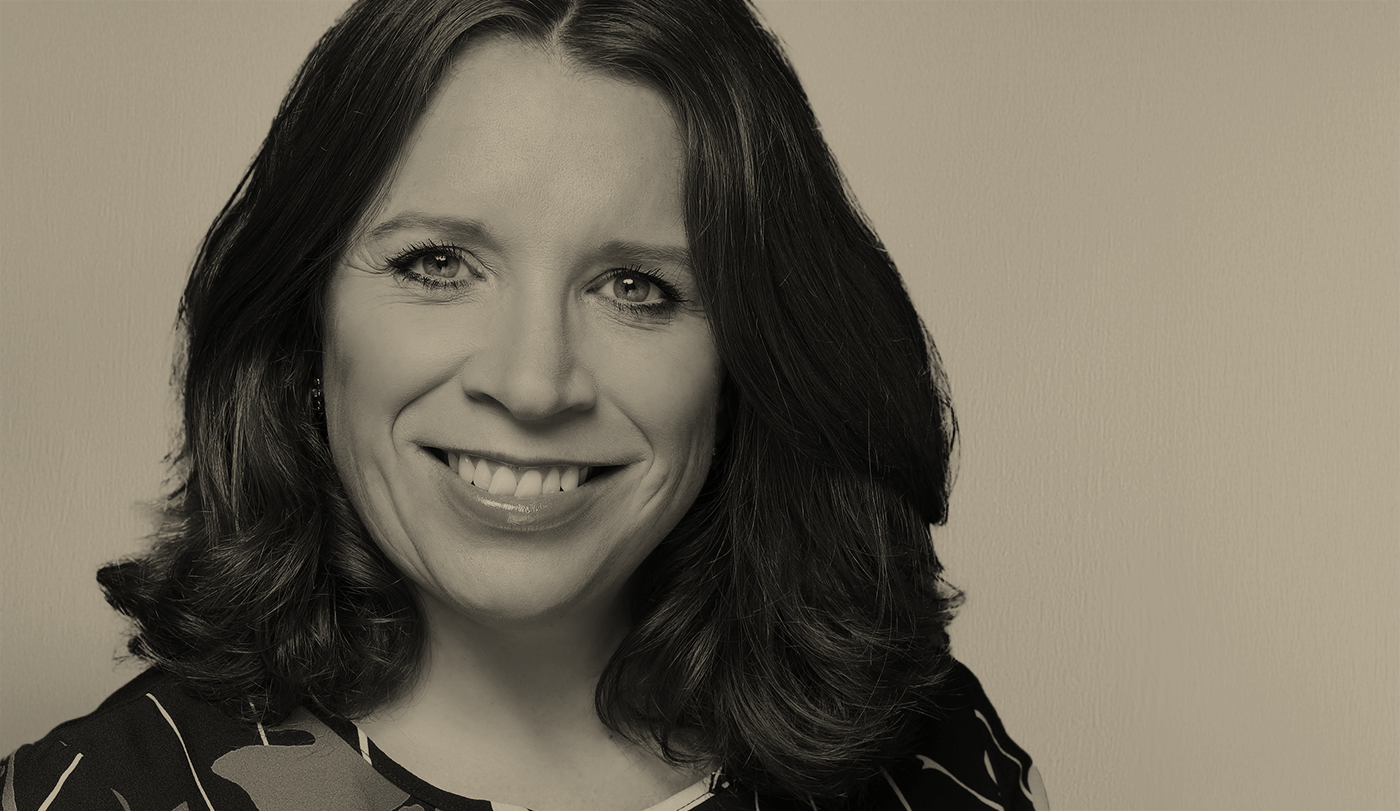T Rowe Price head of distribution, UK and Ireland Nataline Terry discusses where the firm is anticipating demand from wealth managers, genuine collaboration with clients, ESG today and actionable advice on self-assurance – though perhaps not fly-fishing
Where – and why – are you anticipating demand or fund flows from UK-based wealth managers and their clients over the next 12 months?
Given the current market turbulence, I believe active management has never been more important and returning to the fundamentals of strong bottom-up stock selection is key in an environment like this. Partnering even more closely with clients is essential to ensure we provide our perspectives on markets, and how our funds are positioned and performing.
Given the ongoing uncertainty and the pace of change, we are not seeing clients make any major decisions in the near term or large asset allocation changes. Setting aside recent volatility, however, we continue to see a diverse pipeline of opportunities across a broad range of clients, segments and products. Despite some recent caution around US equities, for example, interest remains high across our US equity suite. And clients are, of course, keen to hear our views given our deep US heritage – as illustrated by the strong demand to attend our US equities event last month.
While cost remains a key consideration for many clients, heightened concentration risks in equity markets have raised concerns over the reliance on a small number of stocks within passive products. As a result, investors are increasingly exploring alternatives that offer more controlled risk exposure while aiming for alpha generation.
We expect continued strong interest from wealth managers in enhanced index strategies. These offer similar risk and volatility characteristics to passive investments but with alpha potential across market cycles. Many are also sector and industry-neutral, making them attractive as core portfolio components.
Industry consolidation remains a strong theme, with fewer but larger clients emerging. In addition, possible changes to capital gains tax, sustained cost pressures and evolving regulation – including Consumer Duty – all drive demand for deeper client partnerships and bespoke investment propositions. Retirement income is also becoming a key area of focus, fuelled by demographic trends and ongoing pension reforms.
How are you planning to address and serve that interest?
Our Structured Research suite of equity solutions offers a lower-cost portfolio building block that is particularly attractive to clients seeking lower-cost alpha and risk-managed returns. These strategies harness the fundamental insights of our equity research team, where stock selection is the primary driver of returns. We see this as the purest expression of the value delivered by our global research platform – one of the largest in the industry.
We are also excited by the continued evolution of our solutions business, where we partner with clients at different stages of their development. The team offers a broad range of propositions, from model portfolios to bespoke unitised, sub-advised vehicles for clients looking to build their own fund solutions. Backed by deep global multi-asset expertise, we support clients across areas such as strategic and tactical asset allocation, and standalone investment projects.
Are you seeing a divergence in the demands of UK wealth managers versus, for example, their peers in Europe or on the institutional side in the UK?
Fixed income continues to see strong global demand, though investor preferences vary slightly by region. On the continent, our Euro Corporate Bond strategy remains a key area of interest. In contrast, UK investors are showing a preference for strategies with a broader global remit. Here, our Diversified Income Bond strategy is attracting a wide range of clients, including those in the wealth segment.
One area seeing strong institutional interest – but not yet widespread uptake in the wealth management space – is fixed income ESG. In response, we launched the pioneering our Emerging Markets Blue Economy Bond strategy in late 2023 in collaboration with the International Finance Corporation. This strategy aims to deliver competitive financial returns while supporting the health, productivity and resilience of the world’s oceans and water resources. This compelling dual mandate combines financial and environmental impact.
‘ESG is dead – long live ESG 2.0’ – your thoughts as a distributor, please?
While recent fund flow data and investor surveys indicate a moderation in wealth manager interest in sustainable solutions, demand for impact investing will continue to grow over the long term. Regulatory momentum remains strong and more asset allocators are seeking strategies that combine positive financial returns with meaningful environmental and social outcomes – across both equity and credit markets.
We are seeing robust interest in our impact range, which is underpinned by a clear philosophy and a disciplined process. Clients value the transparency of our approach, which includes defined KPIs and thorough impact reporting. Pleasingly, in our detailed discussions about our offerings, clients are encouraged by the level of rigour and thought behind the process.
An example of how we collaborate with clients in this space can be seen in last year’s launch of our Global Impact Short Duration Bond fund, which was co-developed with a London-based discretionary wealth manager. The fund aims to deliver competitive financial returns while generating a measurable positive impact on the environment and broader society. It is also worth noting our longstanding impact vehicles, Global Impact Credit and Global Impact Equity, were granted approval for the Sustainability Impact label, under the FCA’s Sustainability Disclosure Requirements.
Importantly, ESG today extends well beyond investment products – encompassing reporting, stewardship, marketing and technology. This remains a strategic area for us, reflecting our long-term commitment and the resources we have to support our clients effectively.
As a business, how do you define ‘alternative’ and ‘private’ assets and to what extent should asset managers be looking to service investor demand here?
We define alternative assets as investment strategies outside traditional equity and fixed income categories – including multi-strategy total return, equity long-short and fixed income absolute return. Private assets, which are not publicly traded, are a subset of this broader alternatives universe.
Private assets are gaining client traction and we have been building our capabilities in this area accordingly. The acquisition of Oak Hill Advisors (OHA) reflects T Rowe Price’s commitment to expanding in private market alternatives – particularly private credit. OHA now plays a key role in our growth strategy in this space.
That said, allocations to private markets remain primarily the domain of institutional investors, given the complexity and sophistication of many strategies. As such, we must work closely with our wealth clients to ensure any solution is thoughtfully designed to meet their needs and objectives.
What drives your approach to client communication?
And is there a case for focusing on attracting the ‘right’ type of client? Consolidation in the industry continues to highlight the value of deep relationships and true collaboration with clients. I am fortunate to work with a highly skilled team of relationship managers who help demonstrate our value by connecting clients with the right experts across the business. This collaborative approach enables us to build lasting partnerships and deliver solutions aligned with our clients’ evolving needs.
Outside of work, what is the strangest thing you have ever seen or done?
It is not exactly strange, but whenever we go away as a family in the UK, we always try to do something we would not normally do at home – usually something completely different and new. On a recent trip to Scotland, we decided to try fly-fishing for the first time. Given I had never fished before, it was quite a sight: me, in the pouring rain, wearing oversized waders and attempting to fly-fish. Suffice to say, I caught absolutely nothing – and my technique definitely needs some work.
May we have two book recommendations, please – ideally, one with an investment connection?
The first book I will mention, Beyond Diversification: What Every Investor Needs to Know About Asset Allocation, was written by my colleague Sébastien Page. It is an engaging read, as Seb explores why diversification is so essential to long-term investment success. He also shares practical, real-world examples from T Rowe Price’s asset allocation team.
I also thoroughly recommend The Confidence Code: The Science and Art of Self-Assurance – What Women Should Know by Katty Kay and Claire Shipman. Informative and empowering, it offers a fascinating glimpse into the research behind confidence and provides invaluable, actionable advice. The authors also have a version aimed at girls, which I will be sharing with my two daughters.
Gazing into your crystal ball, what does the asset management sector look like 10 years from now?
Looking a decade ahead in asset management inevitably involves some speculation, but one trend I am confident will persist is industry consolidation and the growing importance of strong partnerships. This collaborative model will support the continued customisation of investment solutions, integrated marketing efforts and co-development of new products.
While fee sensitivity will remain a key consideration, at T Rowe Price, we firmly believe there will always be a role for active management. The dynamic nature of global markets and the need for strategic insight will keep active strategies relevant for investors aiming to navigate complexity and achieve superior long-term outcomes.
Finally, demographic change – particularly the ageing population – is likely to drive increasing demand for income-focused and capital-preserving solutions tailored to the needs of retirees. T Rowe Price has more than four decades of experience and expertise in retirement, and providing the solutions needed to help our clients retire with confidence remains our number-one goal.
“ESG today extends well beyond investment products – encompassing reporting, stewardship, marketing and technology.










